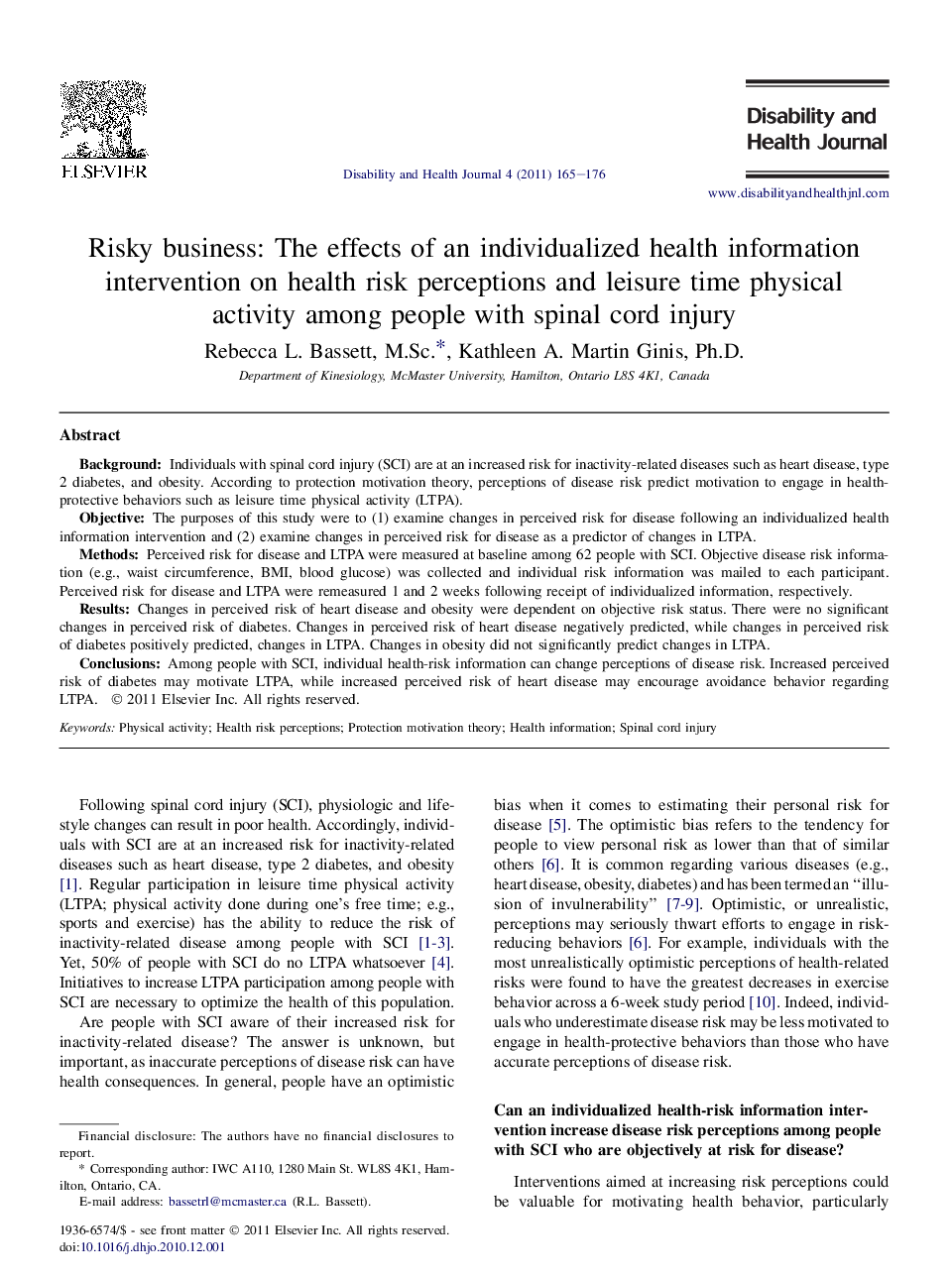| Article ID | Journal | Published Year | Pages | File Type |
|---|---|---|---|---|
| 4197365 | Disability and Health Journal | 2011 | 12 Pages |
BackgroundIndividuals with spinal cord injury (SCI) are at an increased risk for inactivity-related diseases such as heart disease, type 2 diabetes, and obesity. According to protection motivation theory, perceptions of disease risk predict motivation to engage in health-protective behaviors such as leisure time physical activity (LTPA).ObjectiveThe purposes of this study were to (1) examine changes in perceived risk for disease following an individualized health information intervention and (2) examine changes in perceived risk for disease as a predictor of changes in LTPA.MethodsPerceived risk for disease and LTPA were measured at baseline among 62 people with SCI. Objective disease risk information (e.g., waist circumference, BMI, blood glucose) was collected and individual risk information was mailed to each participant. Perceived risk for disease and LTPA were remeasured 1 and 2 weeks following receipt of individualized information, respectively.ResultsChanges in perceived risk of heart disease and obesity were dependent on objective risk status. There were no significant changes in perceived risk of diabetes. Changes in perceived risk of heart disease negatively predicted, while changes in perceived risk of diabetes positively predicted, changes in LTPA. Changes in obesity did not significantly predict changes in LTPA.ConclusionsAmong people with SCI, individual health-risk information can change perceptions of disease risk. Increased perceived risk of diabetes may motivate LTPA, while increased perceived risk of heart disease may encourage avoidance behavior regarding LTPA.
